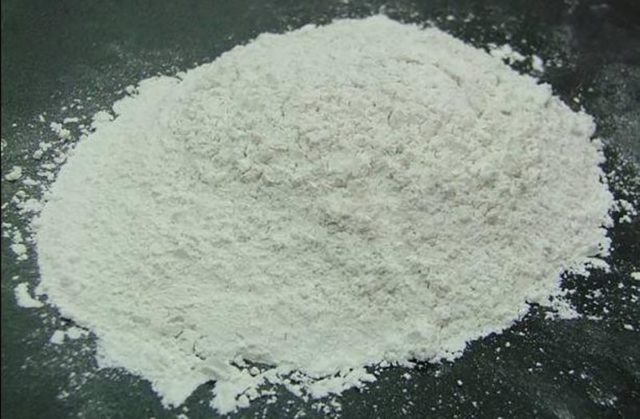Content
Food additive E341 is used in the food production process. Calcium orthophosphate is obtained artificially using chemical reactions. Although it is found in natural foods such as cow's milk. The additive is allowed in many countries, it is used not only in food, but also in other industries.
What is the additive E341
Food baking powder marketed under the E341 label is an inorganic substance. It plays an important role in the human body. Calcium phosphates are found in bones, tooth enamel. Due to the ability to saturate the body with the necessary elements, they are considered useful.
The food additive obtained during the production process looks like a white granular powder or crystals. E341 dissolves well in acids. Therefore, it is absorbed in the stomach under the action of the hydrochloric acid contained in it. In water, ethanol, the additive remains unchanged or dissolves moderately. Unlike other chemical compounds, the higher the temperature of the preservative, the worse its solubility.

Calcium Phosphate Composition
E341 preservative consists of calcium salts and phosphoric acid. Its chemical formula depends on the type made. In industrial conditions, 3 subspecies of orthophosphate are produced:
- E341 (i) - monosubstituted, Ca [H2PO4] 2 - dihydrogen phosphate;
- E341 (ii) - disubstituted, CaHPO4 - hydrogen phosphate;
- E341 (iiii) - trisubstituted, Ca3O8P2 - phosphate.
A food additive is produced chemically. Its molecular formula depends on how it was produced. To obtain a preservative, you can decompose apatite or phosphorite using sulfuric or phosphoric acid. Dibasic orthophosphate is produced by reacting calcium hydroxide with orthophosphoric acid. Tri-substituted E341 is synthesized from calcium nitrate.
The benefits and harms of calcium phosphate
Research into what is the effect of the food additive E341 on the human body has been going on for over 50 years. But it is not necessary to try to completely eliminate the preservative from the diet. The supplement is considered beneficial because it is the source of:
- calcium - the mineral is essential for bones and teeth;
- phosphorus - the element is involved in the process of muscle work, the synthesis of protein compounds.
The specified substance is found in the body in large quantities, so you should not be afraid of it. But when a synthetic calcium-phosphorus compound is received in large quantities, complications may develop. Possible problems associated with the abuse of E341 include:
- disruption of the digestive system;
- the development of renal failure;
- the appearance of stones in the organs of the urinary system;
- the formation of cholesterol plaques.
This side effect can develop if a food supplement enters the body in large quantities and does not have time to be absorbed. Most often, people who consume large amounts of food that contains E341 are faced with an upset stomach.
Problems arise for lovers of semi-finished products, fast food, sausages and ready-made meat products.
Dangerous or not E341 food additive
Calcium orthophosphate has a very low hazard class according to international standards. This means that it can be consumed without any health risks. But doctors recommend monitoring the mass fraction of fluorides in finished products. The norms for different foods are different.

When taken in large quantities, the preservative can become dangerous. When problems arise with the work of the digestive tract, kidneys, liver, first of all, doctors advise to revise the diet.
Application of calcium phosphate
In the food industry, E341 is added during the production of many products. It is used as:
- stabilizer;
- baking powder;
- color fixer;
- acidity regulator;
- emulsifying salt;
- anti-caking agent and separating agent;
- sealant;
- clarifier;
- anti-crystallizer.
These properties of calcium phosphate make it indispensable in many branches of the food industry. Most often, the additive is used in the manufacture of:
- bakery products;
- sports nutrition;
- dry cream and milk;
- ice cream;
- minced meat, fish;
- dry breakfasts;
- confectionery;
- processed cheeses;
- canned vegetables, fruits;
- dry and herbal teas;
- condensed milk;
- products obtained by processing potatoes, including pre-fried and frozen;
- desserts;
- fruit products;
- sugar syrups;
- concentrates of soups and broths;
- non-alcoholic flavored foods.
When many processed foods are consumed, calcium phosphate is absorbed into the body. The substance is found in milk, young cheeses, butter, margarine, spreads.
But the additive is used not only in the food industry. It is used in pharmaceuticals in the manufacture of dietary supplements. E341 is included in the composition of toothpastes. It acts as a soft abrasive, with the help of which plaque is gently cleaned.
Dihydrogen phosphate Ca [H2PO4] 2 is used in agriculture as a source of phosphorus. It is the main component of the fertilizer known as superphosphate. Also, the substance is included in the composition of animal feed.
Conclusion
E341 food supplement is considered harmless. It is found in foods that form the basis of the diet for many people. But when consumed in large quantities, there is a risk of calcium phosphate overdose. Therefore, doctors recommend monitoring the composition of products, minimizing the amount of semi-finished products, fast food, purchased sausages and canned products. Caution should be observed for people who have problems with the stomach, intestines, liver, kidneys.

